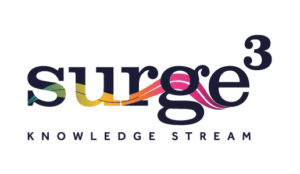Another in our occasional series of blogs in which we will revisit some of the articles that we have found most useful over the years … these are the articles that can always be found on desks in the Decision Architects office. This week we are looking at Everett Rogers’ 1962 work on Diffusion of Innovations (and yes, it’s a book not an article).
“This model provides an intuitively simple lens through which we can look at how consumers approach any sort of NPD – it is not without its critics but it is a useful short-hand which we often apply to (say) a segmentation framework to talk to the propensity of different segments to try or adopt a new product or service …. be that a new delivery format for hot drinks, a new insurance concept or some form of health tech” James Larkin, Decision Architects
The foundations of this now ubiquitous framework are interesting. Rogers’ 1962 book was based on work he had done some years earlier at Iowa State University with Joe Bohlen and George Beal. Their ‘diffusion model’ was focused solely on agricultural markets and tracked farmers purchase of seed corn. It was Iowa, and Rogers was professor of rural sociology!
The diffusion model’s signature bell curve identified
Innovators: Owned larger farms, were more educated and prosperous and were more open to risk
Early Adopters: Younger and although more educated were less prosperous but tended to be community leaders
Early Majority: More conservative but still open to new ideas – active in their community and someone who could influence others
Late Majority: Older, conservative, less educated and less socially active
Laggards: Oldest, least educated, very conservative. Owned small farms with little capital
Between 1957 and 1962 Rogers’ expanded the model to describe how new technology or new ideas (not just seed corn) spread across society, but whilst Rogers initial work assumed that technology adoption would spread relatively organically across a population in practice there are barriers that can derail mainstream adoption before it has begun. The expansion to this frame discussed in Geoffrey More’s 1991 book ‘Crossing the Chasm’ highlighted a critical barrier to widespread adoption. This Chasm exists between the early adopter and early majority phases of the framework and to successfully navigate requires an understanding of the personality types that form the 5 fundamental building blocks of the model.
Innovators are happy to take a risk and try out products and services that may be untested or ‘buggy’. They look at the potential, do not expect things to be perfect and are happy to work with companies to improve initial offerings, a fertile testing ground for new technology. Early adopters in contrast are more tactical in their adoption. They want to be at the forefront of new technology but will have conducted their own research to evaluate the likelihood that the product will offer them tangible value. They are also more fickle, and are more likely to leave a product or service that is not living up to what was promised creating a potential void between them and the early majority.
Once we start to look at the early majority and beyond there is marked shift towards using something that ‘just works’. They are less interested in something new or shiny but, as the Ronseal advert would put it, something that ‘does exactly what it says on the tin’.
Seth Godin put it well in his 2019 blog when he said:
“Moore’s Crossing the Chasm helped marketers see that while innovation was the tool to reach the small group of early adopters and opinion leaders, it was insufficient to reach the masses. Because the masses don’t want something that’s new, they want something that works, something that others are using, something that actually solves their productivity and community problems.”
At its basic level the innovation adoption curve is a model that can be used to critically assess the appetite to adopt something new within a particular audience (be that segment, cohort or among a more general population). This provides us with a crucial framework element addressing the ‘where to play’ question … which we talk about so often with our clients and to enable the prioritisation of resources where they will have the biggest impact on growth and revenue
To go beyond the innovator and early adoption phases, products and services must deliver on their early promise, be built around customer needs improving on what went before. Getting there first can be a huge commercial advantage but failing to understand your audience and adapt accordingly can be the difference between wide-scale adoption and, at best, obscure appeal.



